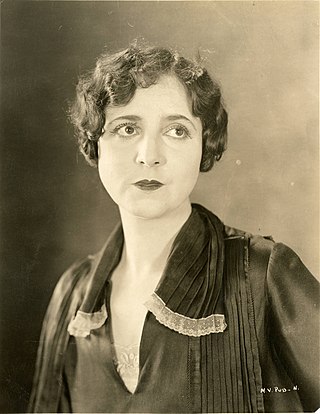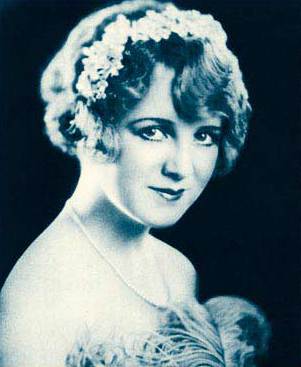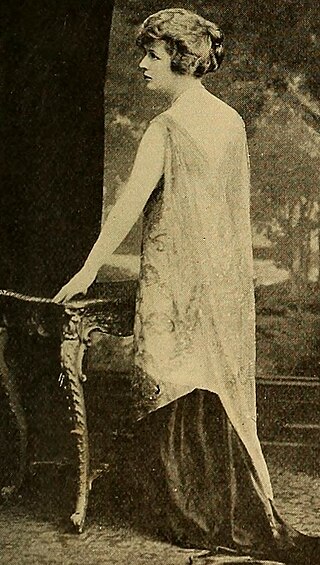
The Exploits of Elaine is a 1914 American film serial in the damsel in distress genre of The Perils of Pauline (1914).

Edith Wharton was an American writer and designer. Wharton drew upon her insider's knowledge of the upper-class New York "aristocracy" to portray realistically the lives and morals of the Gilded Age. In 1921, she became the first woman to win the Pulitzer Prize in Fiction, for her novel The Age of Innocence. She was inducted into the National Women's Hall of Fame in 1996. Among her other well known works are The House of Mirth, the novella Ethan Frome, and several notable ghost stories.

Willa Sibert Cather was an American writer known for her novels of life on the Great Plains, including O Pioneers!, The Song of the Lark, and My Ántonia. In 1923, she was awarded the Pulitzer Prize for One of Ours, a novel set during World War I.

The Sun Also Rises is a 1926 novel by American writer Ernest Hemingway, his first, that portrays American and British expatriates who travel from Paris to the Festival of San Fermín in Pamplona to watch the running of the bulls and the bullfights. An early modernist novel, it received mixed reviews upon publication. Hemingway biographer Jeffrey Meyers writes that it is now "recognized as Hemingway's greatest work" and Hemingway scholar Linda Wagner-Martin calls it his most important novel. The novel was published in the United States in October 1926 by Scribner's. A year later, Jonathan Cape published the novel in London under the title Fiesta. It remains in print.

The Age of Innocence is a 1920 novel by American author Edith Wharton. It was her eighth novel, and was initially serialized in 1920 in four parts, in the magazine Pictorial Review. Later that year, it was released as a book by D. Appleton & Company. It won the 1921 Pulitzer Prize for Fiction, making Wharton the first woman to win the prize. Though the committee had initially agreed to give the award to Sinclair Lewis for Main Street, the judges, in rejecting his book on political grounds, "established Wharton as the American 'First Lady of Letters'". The story is set in the 1870s, in upper-class, "Gilded Age" New York City. Wharton wrote the book in her 50s, after she was already established as a major author in high demand by publishers.

The House of Mirth is a 1905 novel by American author Edith Wharton. It tells the story of Lily Bart, a well-born but impoverished woman belonging to New York City's high society around the end of the 19th century. The House of Mirth traces Lily's slow two-year social descent from privilege to a lonely existence on the margins of society. In the words of one scholar, Wharton uses Lily as an attack on "an irresponsible, grasping and morally corrupt upper class."

The Buccaneers is the last novel written by Edith Wharton. The story is set in the 1870s, around the time Wharton was a young girl. It was unfinished at the time of her death in 1937 and published in that form in 1938. Wharton's manuscript ends with Lizzy inviting Nan to a house party, to which Guy Thwaite has also been invited. The book was published in 1938 by Penguin Books in New York. After some time, Marion Mainwaring finished the novel, following Wharton's detailed outline, in 1993.
The tragic mulatto is a stereotypical fictional character that appeared in American literature during the 19th and 20th centuries, starting in 1837. The "tragic mulatto" is a stereotypical mixed-race person, who is assumed to be depressed, or even suicidal, because they fail to completely fit in the "white world" or the "black world". As such, the "tragic mulatto" is depicted as the victim of the society that is divided by race, where there is no place for one who is neither completely "black" nor "white".

Percy Lubbock, CBE was an English man of letters, known as an essayist, critic and biographer. His controversial book The Craft of Fiction gained influence in the 1920s.

Beverly Bayne was an American actress who appeared in silent films beginning in 1910 in Chicago, Illinois, where she worked for Essanay Studios.

Marie Pauline Garon was a Canadian silent film, feature film, and stage actress.
Summer is a novel by Edith Wharton, which was published in 1917 by Charles Scribner's Sons. While most novels by Edith Wharton dealt with New York's upper-class society, this is one of two novels by Wharton that were set in New England. Its themes include social class, the role of women in society, destructive relationships, sexual awakening and the desire of its protagonist, named Charity Royall. The novel was rather controversial for its time and is one of the less famous among her novels because of its subject matter.

The Custom of the Country is a 1913 tragicomedy of manners novel by the American author Edith Wharton. It tells the story of Undine Spragg, a Midwestern girl who attempts to ascend in New York City society.

Katherine Corri Harris was an American actress and socialite. She appeared in several stage plays and three silent films, and was the first wife of actor John Barrymore.

The Pictorial Review was an American women's magazine published from 1899 to 1939.

Henry Symes Lehr was an American socialite during the Gilded Age who was dubbed "America's Court Jester".

The Reef is a 1912 novel by American writer Edith Wharton. It was published by D. Appleton & Company. It concerns a romance between a widow and her former lover. The novel takes place in Paris and rural France, but primarily features American characters. While writing the novel, Edith Wharton visited England, Sicily, and Germany, among other locations. In a letter to Bernard Berenson in November 1912, Wharton expressed regret regarding her novel, calling it a “poor miserable lifeless lump”. She wrote, “Anyhow, remember it’s not me, though I thought it was when I was writing it—& that next time I’m going to do something worthwhile!!”

The House of Mirth is a 1918 American silent melodrama film directed by French film director Albert Capellani, starring Katherine Harris Barrymore as Lily Bart. It is a cinema adaptation of Edith Wharton's 1905 novel The House of Mirth and the first-ever cinema adaptation of any of her work. Metro Pictures put many efforts into the film in order to turn the original novel into an "all-star cast" film to earn popularity, as Metro Pictures itself announced that the film was "one of the most important productions" during 1918, and that the film contained "the strongest and the most distinguished cast ever selected for the screen". Initially, Emmy Wehlen starred in the role of Lily Bart in the film. Later, she was replaced by Katherine Harris Barrymore. The film contributed to the huge success of Metro Pictures that year. It is not known whether the film currently survives.

Julia Grinnell Storrow Cruger was an American novelist. Because many of her books examined the American social world, she was known as the Edith Wharton of her day.
The Age of Innocence is a 1924 American silent film directed by Wesley Ruggles. It is the first film adaptation of Edith Wharton's 1920 novel The Age of Innocence. It was produced and distributed by Warner Brothers.

















